|
|
|
|
| Missing In Action (MIA) | Prisoners Of War (POW) | Unexploded Ordnance (UXO) |
| Chronology | Locations | Aircraft | Ships | Submit Info | How You Can Help | Donate |
|
| USN Porpoise Class Submarine 1,350 Tons (standard) 1,997 Tons (submerged) 300' 60 x 25' x 13' 8" 1 x 4" 50 cal deck gun 4 x .30 cal MG 4 bow and 2 stern 21" torpedo tubes with 16 torpedoes  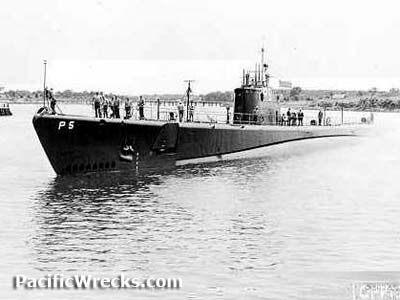 USN c1936-1937  USN 1940 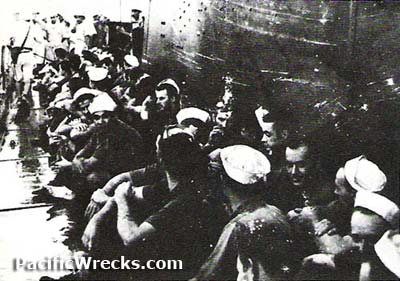 IJN March 1942 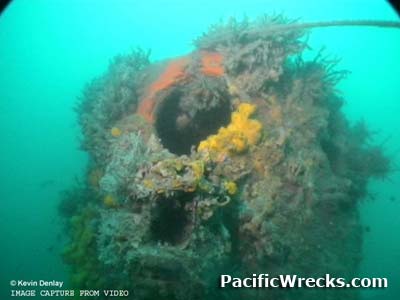 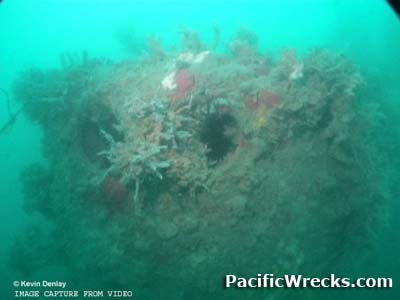 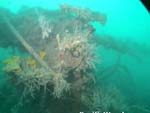 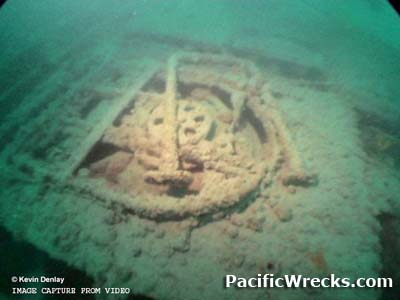 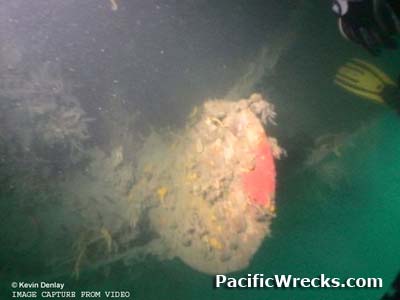 K. Denlay Nov 23, 2006 |
Sub History Built by the Electric Boat Company in Groton, CT. Laid down February 25, 1935 as a Porpoise Class Submarine. Launched May 9, 1936 as USS Perch (SS-176) sponsored by Mrs. Thomas Withers. Commissioned November 19, 1936 in the U.S. Navy (USN) with Lieutenant Commander George C. Crawford in command. When completed "P5" was painted in white on the conning tower and bow indicating it was a "P" Boat (Porpoise Class). After her shakedown cruise, Perch joined the Pacific Fleet Submarine Squadron 6 (SubRon 6) during November 1937. The following spring she was engaged in the annual fleet exercises and completed a survey of the Aleutian Islands and served with the fleet off the East Coast. In October 1939, Perch departed San Diego for Manila as a division flagship and made a summer cruise in 1940 to Tsingtao and Shanghai. She spent the year preceding the war in operations around the Philippines. Perch rendezvoused with two transports off Shanghai and escorted the Fourth Marines from China to the Philippines. On December 8, 1941 at the start of the Pacific War, Perch was under the command of Lieutenant Commander David A. Hurt based at Cavite Navy Yard. At the start of the Pacific War had a large "176" in white on the conning tower. First War Patrol On December 10, 1941 departs on her first war patrol. That night, Perch slipped passed the minefield off Corregidor and patrols between Luzon and Formosa. Failing to find targets, she proceeds to Hong Kong. On December 25, 1941 Perch fired four torpedoes at a large merchantman, all miss. On December 27, 1941 torpedoes Nojima Maru damaging the bow in the South China Sea, but escorts prevented Perch from observing the kill. Afterwards, the submarine proceeded south making several unsuccessful attacks en route bound for Darwin. Second War Patrol Perch departs on her second war patrol off Kendari to scout the harbor and made several attempts to get through the narrow entrance to an attack position. After a week of close contact with the enemy and obtaining information, Perch continued to search for targets. In a night attack on a large merchantman off the eastern coast of Celebes (Sulawesi). Perch was hit in the superstructure, forward of the pressure hull of the conning tower, by a high explosive round which blew away the bridge deck, punctured the antenna trunk and temporarily put her radio out of commission. Her crew made a courageous effort to make repairs on deck ant night in enemy patrolled waters then proceeded to the Java Sea. Sinking History On March 1, 1942 in the evening, Perch surfaced roughly thirty miles northwest of Surabaya on Java and attacked an enemy convoy landing troops to the west. Spotted, two Japanese destroyers Natsugumo and Minegumo release depth charges and caused her to dive to the 135' sea floor. Also engaged by Amatsukaze that fires 32 rounds at 2,500m and releases six depth charges with Hatsukaze that fires 5 rounds and releases six depth charges. Several additional depth charge attacks caused extensive damage and knocked the starboard motors out of commission and causing extensive flooding inside. The crew worked to make emergency repairs. On March 2, 1942 at 2:00am Perch surfaces in the Java Sea but was forced to submerge as destroyers Ushio and Sazanami release depth charge attacks that cause damage. Leaking oil and air from damaged ballast tanks, convinced the Japanese the submarine was breaking up and they departed the area. With only one engine working, the crew made all possible repairs while submerged. On March 3, 1942 in the early morning, Perch surfaced but was surrounded by two cruisers and three destroyers and was immediately spotted and fired upon. With shells straddling the submarine, Captain Hurt ordered: "Abandon ship, scuttle the boat.". Aboard, the crew scuttled the submarine with Lieutenant Kenneth G. Schacht earning the Navy Cross for leading the effort to scuttle the vessel while under fire and volunteered to stay aboard with another crew member that proceeded to the aft engine room, opened the main ballast tank emergency vents then raced to the conning tower as the submarine flooded with seawater and was the last to exit before Perch sank in the Java Sea. When Perch failed to communicate, the submarine was reported as Missing In Action (MIA). Officially removed from the Navy list on June 24, 1942. Fate of the Crew On March 3, 1942 the entire crew of fifty-four enlisted men and five officers were captured by Japanese destroyer Ushio and became Prisoners Of War (POW). The crew were transported to Java and detained at Java POW Camp D.X.Y. at Batavia. Later, some of the crew were later transported to Japan and interrogated at Ofuna Camp. Afterwards, the crew were sent to Ashio Copper mine where they were forced to labor until the end of the Pacific War. While in captivity, six of the crew died in captivity from malnutrition and neglect: 1) MM1c Frank Elmer McCreary, 3461679 died January 4, 1943 of pneumonia in Fukuoka in Japan. 2) Houston Ernest Edwards, 3554635 died July 10, 1944. 3) CMM Albert Kenneth Newsome, 2655346 died April 6, 1945 of pellagra vitamin deficiency. 4) MM1 Charles Newton Brown, 2015730 died April 18, 1945 of pellagra vitamin deficiency. 5) FC1c Robert Archibald Wilson, 2233464 died June 15, 1945 at Java POW Camps D.X.Y. at Batavia on Java. 6) PHM Philip James Dewes, 129560 (Newark, NJ) died July 9, 1945 of pellagra vitamin deficiency. The rest of the crew members survived until the end of the Pacific War and were liberated in September 1945. Captain Lt. Commander David A. Hurt was transported to Japan and detained at Omori POW Camp. As a prisoner he was a father figure to younger officers and enlisted men. At the end of the Pacific War, he was released from Tokyo POW Camp Branch #2 (Kawasaki) Tokyo Bay Area 35-139 and returned to the United States. Recovery of Remains During 1948, the six Prisoner Of War (POW) crew that died in captivity were recovered and transported to the Philippines and United States for permanent burial. Memorials Afterwards, USS Perch (SS-313) became the second submarine named Perch. McCreary is buried at Manila American Cemetery at plot B row 10 grave 110. Houston Ernest Edwards is buried at Knoxville National Cemetery at section A, site 5693. Charles Newton Brown is buried at Woodlawn National Cemetery in Elmira, NY at plot C, grave 3219. Robert Archibald Wilson is buried at Beverly National Cemetery at plot F grave 1734. Newsome is buried at Newsome Family Cemetery in Ahoskie, NC. He earned the Prisoner of War Medal and Purple Heart, posthumously. Dewes is buried at Greenwood Memorial Park in San Diego, CA. Hurt was killed on November 23, 1945 during a hunting accident at age 42. He is buried at Jeffersonville Cemetery in Tazewell VA. He is also memorialized on the Virginia War Memorial in Richmond, VA. Schacht passed away in 1985 at age 71 or 72. He is buried at United States Naval Academy Cemetery in Annapolis, MD. Awards For her World War II service, Perch earned one battle star. Shipwreck During November 2006, MV Empress made a sonar contact with an underwater target in the Java Sea north of Surabaya. On November 23, 2006 a group of divers off MV Empress including Vidar Skoglie, Kevin Denlay, Dieter Kops, Mike Gadd and Craig Challen dove the site and confirmed it was a submarine and located a plaque with "USS PERCH SUBMARINE" on the conning tower. Kevin Denlay adds: "Disappointingly, as we have found on many of the other Java Sea wrecks we have discovered over the years, visibility on the bottom, below the thermocline, is often very poor, and Perch is no exception. On the few dives we did on Perch visibility varied from between five and fifteen feet effective on the wreck, that is, making out any detail beyond this was impossible. It was also quite dark, although the low light capability of the video camera 'enhances' the light levels so the images don't look as dark as what it really was to the eye." References Naval History and Heritage Command (NHHC) Perch (SS 176) (crew list) NavSource - USS Perch (SS-176) NavSource - USS Perch (SS-176) March 4, 1942 Six Men Died as Japanese POW's [PDF] On Eternal Patrol - USS Perch (SS-176) Lieutenant Kenneth G. Schacht Navy Cross citation: "The President of the United States of America takes pleasure in presenting the Navy Cross to Commander [then Lieutenant] Kenneth George Schacht (NSN: O-74895), United States Navy, for extraordinary heroism in the line of his profession as Damage Control Officer and First Lieutenant of the U.S.S. PERCH (SS-176), during the Second War Patrol of that submarine in the Java Sea area from 2 February 1942 until the ship had to be scuttled after sustaining damage in an attack by Japanese forces on 2 March 1942. During a thirty-three hour period of extreme enemy countermeasures and despite increasing fatigue, extreme conditions of tropical heat, humidity and foul air, he fought courageously, with inspiring leadership and able supervision to repair damages to his ship which progressively multiplied until they became fatal and necessitated making the decision to abandon and scuttle the ship. When this decision had been made and while under enemy shellfire from a short range, well knowing the risks involved in scuttling a submarine already heavy with water and full of leaks and which might at any moment be hit by shells, Commander Schacht voluntarily stayed behind to scuttle the ship assisted by but one man. In order to successfully accomplish this he proceeded aft to the engine room, a considerable distance from the only open hatch, opened the main ballast tank emergency vents and then made a dash for the conning tower. Arriving at the hatch after its edge was beneath the surface, he was the last man to leave his ship, fighting his way out through the hatch. His coolness and high devotion to duty contributed directly to the saving of many of his shipmates' lives, and indirectly by successfully scuttling the ship and depriving the enemy of a knowledge of its secrets saved the lives of many others. His conduct throughout was an inspiration to the officers and men in his ship and were in keeping with the highest traditions of the United States Naval Service" NARA World War II Prisoners of War Data File - David A Hurt NARA World War II Prisoners of War Data File - Charles N Brown NARA World War II Prisoners of War Data File - Philip J Dewes date of last report as died July 9, 1945 NARA World War II Prisoners of War Data File - Houston E Edwards NARA World War II Prisoners of War Data File - Frank Elmer Mc Creary NARA World War II Prisoners of War Data File - Albert K Newsome NARA World War II Prisoners of War Data File - Robert A Wilson American Battle Monuments Commission (ABMC) - Frank E. McCreary FindAGrave - Frank Elmer McCreary (photo, grave photo) FindAGrave - Houston Ernest Edwards (photo, grave photo) FindAGrave - Albert Kenneth Newsome (photos, grave photo) FindAGrave - Charles Newton Brown (photo, Virginia War Memorial photo, grave photo) FindAGrave - Robert Archibald Wilson (grave photo) National WWII Memorial - WWII Registry - Robert Archibald Wilson FindAGrave - Philip James Dewes (grave) date of death listed as July 25, 1945 on headstone FindAGrave - David Albert Hurt, Sr (photo) FindAGrave - Capt Kenneth George Schacht (photo, Navy Cross citation, grave photo) Discovery of USS Perch (SS-176) the Java Sea reveals a wartime secret by Kevin Denlay November 23, 2006 The Guardian "British second world war shipwrecks in Java Sea destroyed by illegal scavenging" by Oliver Homes and Luke Harding November 16, 2016 "The 91m US submarine Perch, whose entire crew were captured by the Japanese, had been totally removed, the report said" History of War: "Java Sea Shipwrecks of World War 2: One of the men who found them reflects on their loss" by James Hoare November 23, 2016 Thanks to Kevin Denlay for additional information Contribute
Information Last Updated
|
190' / 58m POW 59 Prisoner 6 Died Photo Archive Coning Tower Plaque |
| Discussion Forum | Daily Updates | Reviews | Museums | Interviews & Oral Histories |
|